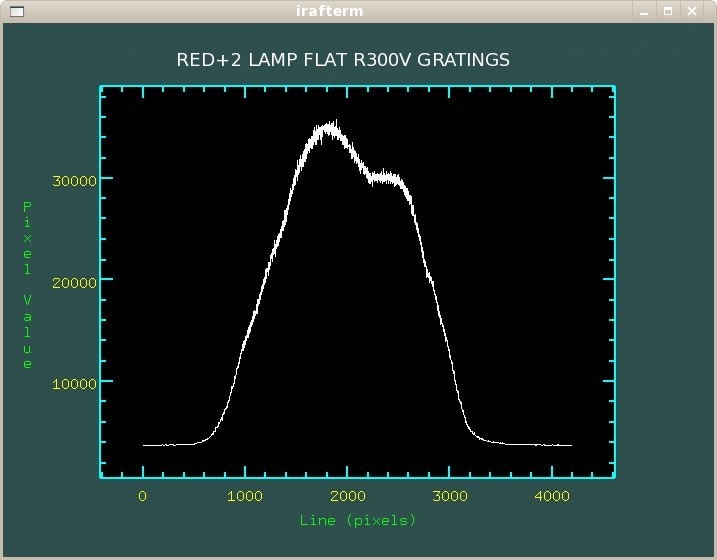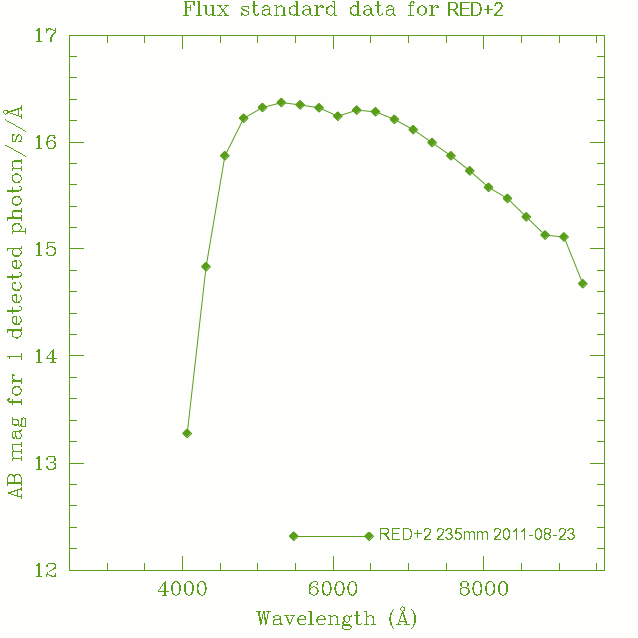Spatial scale on IDS
Spatial profile degradation at the CCD edges
The 235mm camera with RED+2 CCD provides a spatial scale of 0.44 arcsec/pixel.
The maximum unvignetted slit-length usable with IDS is 3.3 arcmin, corresponding
to some 450 detector pixels for RED+2.
Note that the spatial profile degrades toward the upper
and bottom parts of the CCD, giving the impression that in these regions
the star image is out-of-focus (most evident in the vignetted regions where
a stellar profiles becomes double-peaked). This is a feature due to the IDS
optics, in particular the CCD corrector lens, that was not designed for large
format detectors like the RED+2 CCD.
Fringing and Cosmetic defects
RED+2 chip suffers from mild fringing.
Here there is an
image of a flat field spectra showing fringing in the redmost part (from around 9000 Å) and here there is an
example showing the fringing modulation along the whole RED+2 CCD with R300V grating covering up to 10000 Å. In this image, for comparison the fringing modulation of the EEV10 detector was included. The level of fringing for the RED+2 detector is less than 2% in all interval, with an average of about 1%.
There are a few cosmetic defects on the surface of the chip, but
nothing particularly severe.
Charge spreading variations
Effects on spectral resolutions
The diffusion of charges between pixels during integrations causes a degrading
of the spatial and spectral resolution. For a long-slit spectrograph like
IDS, with the INT mean seeing around 1".0-1".5, spatial degradation is not significant with the pixel size of the RED+2, but should be considered in the spectral direction. For a back illuminated CCD this
charge diffusion (often referred to as the Modulation Transfer Function;
MTF) becomes progressively worse for shorter wavelength incident light. For
example, using a slit-width projecting 2 pixels on the detector results
in a FWHM measured of 2.4 pixels (measured at ~4000 Å) when the spectrograph
is at best focus. Similarly, a slit-width projecting 4 detector pixels
will produce a FWHM of ~4.4 pixels (at ~4000 Å). This effect becomes
less severe towards redder wavelengths and is negligible at around 6000 Å.
Measured throughput




